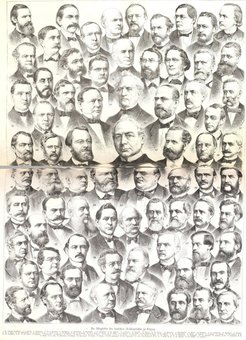Professionalizing Legal Professions in England and Germany (1850-1900)
The Judge in the Superior Courts
Abgeschlossenes Promotionsprojekt

The 19th century was a time of constant change, and this change brought with it legal reforms. If we look at non-European countries, the legal reforms were the result of colonization, unequal treaties, and/or the goal to participate in the idea of the “West”. However, Europe was itself uncertain when it came to its own legal reforms and definition of the West, in a sense, designating itself the center of the world. Given the fluidity of the legal world and strive for modernization, my project compares the changes in the legal education systems and the steps of professionalization in two of the leading actors of Europe: England and Germany.
In both jurisdictions, there were different motivations for the changes in legal education. In England, the unorderly legal system became more apparent during the codification debates in early 19th century. In addition, court system was changing slowly, and it was clear that the legal profession would have to keep up with these changes. All of these developments in the 19th century triggered a parallel reform in legal education and the introduction of a scientific approach. While in England the changes in legal education were mostly carried out by the legal profession itself, in Germany these were strongly seen as government controlled. The German states had a tradition of teaching law in law faculties, and unlike England, they were providing a scientific legal education. Within these different circumstances, the legal professions in both countries had to standardize and to restructure their professional identity.
In order to understand how new professional standards were created, my project shows the development of legal education at the universities and Inns of Court in England. This will include an analysis of the changes in the curricula, introduction of the exams and exam questions, as well as the use of textbooks and treatises. In terms of professional identity, the legal profession was trying to draw its own borders, or restructuring them, through establishing new institutions or changing the old ones. Analysing such changes and examining sources like the legal journals, where these changes were negotiated, shows how the legal profession was handling the restructuring of its professional identity.
In both countries, the process of professionalization was consciously or unconsciously focused on an ideal judge. The judge sitting in the superior courts in each country could be deemed most representative of an ideal judge as the decisive person in legal practice and also the lawmaker in terms of England. The results of the analysis of new professional standards and restructuring of professional identity processes will also be used to understand what the ideal judge meant for the two jurisdictions. This figure was one of the most influential parts of the legal system, also as a model for the non-European countries studied in the Translations and Transitions research group. Thus, the meaning of the ideal judge for the 19th century is also important for understanding 20th-century narratives such as the status of the judge during the World Wars or his new connotation in terms of supranational bodies like European Union.












